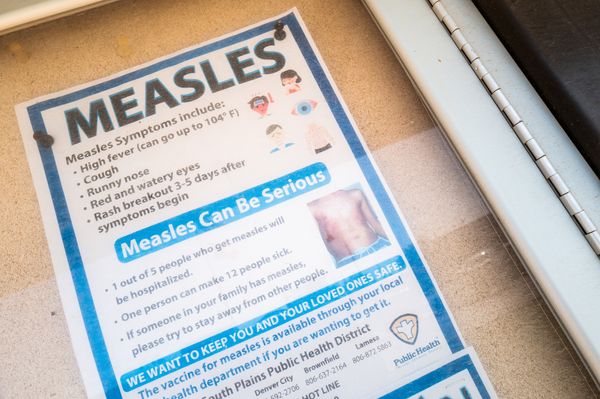
- Microsoft has claimed a quantum computing breakthrough with its new "Majorana 1" chip. But skeptics argue key evidence is still missing.
Microsoft has claimed a major breakthrough in quantum computing with its first quantum chip. However, the announcement has been met with deep skepticism by experts.
On Wednesday, the company revealed the Majorana 1, claiming it would accelerate the timeline for quantum computers capable of solving meaningful, industrial-scale problems from decades to just years.
The company said it had created what it calls the “world’s first topoconductor,” a new type of material that can control Majorana particles to create more reliable qubits.
"After a nearly 20-year pursuit, we’ve created an entirely new state of matter, unlocked by a new class of materials, topoconductors, that enable a fundamental leap in computing," Microsoft CEO Satya Nadella said on X. "The qubits created with topoconductors are faster, more reliable, and smaller."
Topological qubits could address one of quantum computing's biggest challenges—high error rates.
While many researchers have focused on developing error-correction methods for quantum computing, Microsoft has taken a different approach by trying to create qubits that are inherently more robust and naturally error-resistant from the start.
However, the company's claims have been met with scrutiny from many experts in the field.
"There is no publicly available evidence that this test has been conducted successfully"
Several experts, including leading theoretical physicist John Preskill, said the company had yet to release any performance data to back up its claim.
"In their roadmap, Microsoft described a protocol for demonstrating a topologically protected qubit. There is no publicly available evidence that this test has been conducted successfully," he said in a post on X.
One major issue is that Microsoft has made similar claims before—only to retract them later.
In 2018, Microsoft claimed the experimental creation of Majorana zero modes—a building block of topological qubits—but later retracted that claim.
Scott Joel Aaronson, an expert on quantum computing, addressed this question in a blog post.
"Certainly that history is making some experts cautious about the new claim," he wrote.
Aaronson added that when he asked Chetan Nayak, one of the Microsoft researchers behind the announcement, about the skepticism, Nayak reportedly responded: "Look, we now have a topological qubit that’s behaving fully as a qubit; how much more do people want?"
Others have questioned if Microsoft had actually built a topological qubit.
Jason Alicea, a professor of theoretical physics at the California Institute of Technology, told The New York Times that while a "topological qubit is possible in principle" and "a worthwhile goal” it needed to be verified.
“You have to verify, though, that a device behaves in all the magical ways that theory predicts it should; otherwise, the reality may turn out to be less rosy for quantum computing. Fortunately, Microsoft is now set up to try," she said.
Jonathan Oppenheim, a professor of physics at University College London (UCL), also pointed to what he said were gaps between the research paper and Microsoft's official announcement.
"There is a massive disconnect between the scientific article, and their public claims, but the most obvious one is that they haven't shown that they have a topological qubit. The editors even took the rare step of highlighting this," Oppenheim told Fortune.
The peer review file of the new Microsoft paper opens with an editor's note that reads: "The editorial team wishes to point out that the results in this manuscript do not represent evidence for the presence of Majorana zero modes in the reported devices. The work is published for introducing a device architecture that might enable fusion experiments using future Majorana zero modes."
Oppenheim noted: "The claim is that they have some architecture which maybe one day will have a topological qubit. But at the moment, they don't have one."
Sergey Frolov, a physics professor at the University of Pittsburgh, went even further, arguing that Microsoft's claims rest on an unproven foundation.
"The physics has not been established by scientists and by research literature," Sergey Frolov said. "There's been claims made but the physics remains controversial."
Big Tech's quantum computing race
Quantum computing holds immense potential across various industries, including drug discovery, weather forecasting, financial risk analysis, and logistics optimization.
Big Tech rivals, including Google and IBM, are also working on quantum computing, but Microsoft’s approach has been notably different from that of its competitors.
Some experts warn that bold claims without concrete evidence could damage the industry’s credibility across the board.
"These kinds of announcements don't help, they hurt," Frolov said. "The quantum computing industry already comes under a lot of scrutiny periodically with questions around timelines and usefulness."
However, the announcement has been met with some enthusiasm from other companies in the space.
"This is truly an advance for the industry: building a custom chip that uses topological qubits which many consider extremely useful for scaling to powerful quantum computers," Markus Pflitsch, founder and CEO, of Terra Quantum, said.
"The announcement reinforces our assessment that fault-tolerant quantum hardware is closer than many business leaders think."
"However, we agree with Microsoft that a hybrid solution of AI, HPC, and quantum will deliver commercial value before the arrival of universal, fault-tolerant quantum systems," he added.
Representatives for Microsoft did not immediately respond to a request for comment from Fortune.







